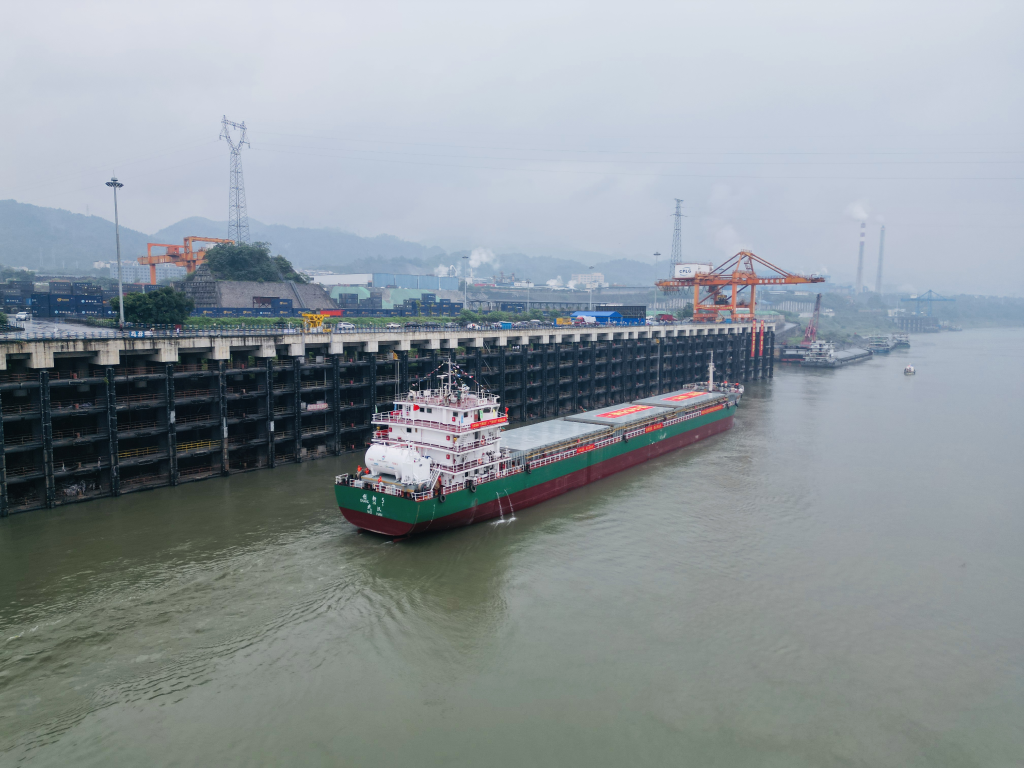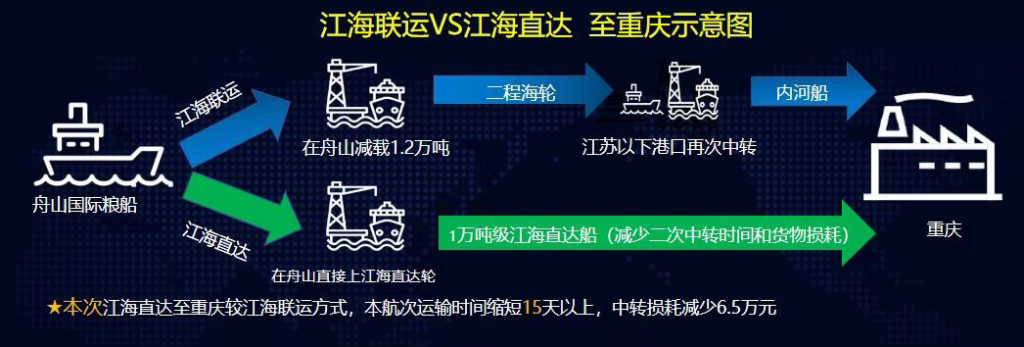Chongqing welcomes its first 10,000-ton seagoing ship
2024-05-14 13:01:18
CHONGQING (CQNEWS) -- At 15:45 on May 11, the cargo ship "Chuangxin 5", carrying 5,400 tons of soybeans, smoothly docked at Luohuang Port in Jiangjin, Chongqing, marking the end point of its voyage.

This marked the pioneering moment of the first river-sea direct vessel sailing directly to Chongqing from the coast, establishing the inaugural river-sea direct route in the upper reaches of the Yangtze River and introducing the first 10,000-ton seagoing vessel to sail directly to Chongqing.
Reporters there learned that following the unloading of this cargo, it will be transported directly to Xinjin, Chengdu by train, achieving seamless water-rail intermodal transportation between the sea and the river. This method significantly reduces the overall transportation time by approximately 20 days compared to traditional river-sea transportation.
Subsequently, the "Chuangxin 5" will undergo a return voyage test, carrying steel from Changshou and phosphate ore from Guizhou to Zhoushan Port. This further validates the feasibility and economic viability of the "Chongqing-Zhoushan" river-sea direct route and lays the groundwork for the subsequent regular liner services.

As per the information provided, following the construction of the Three Gorges Reservoir, various sections of the upper reaches of the Yangtze River, including the reservoir area, backwater fluctuation area, and natural navigation channels, coexist. The navigational conditions in the reservoir area have notably improved. However, certain areas within the backwater fluctuation zone and natural navigation channels exhibit curved and narrow passages during periods of low water levels. These areas experience turbulent water flow, resulting in poor navigational conditions and limited passage capacity.
However, sea-going vessels are larger in size and have deeper drafts. Additionally, they possess structural differences in important equipment such as rudder systems, resulting in varying navigation and maneuverability performance. Navigating through curved, narrow, shallow, and swift waters presents greater safety challenges.
On April 24 of this year, the inaugural voyage test of the "Chongqing-Zhoushan" river-sea direct route was initiated, aiming to tackle these difficulties.
The "Chuangxin 5" set sail from Zhoushan Port in Zhejiang Province, traversed the new "Chongqing-Zhoushan" river-sea direct route, passed through the Three Gorges Dam, and arrived at Luohuang Port in Chongqing after an 18-day journey.
"As a native of Chongqing, I am proud to be part of this historic moment," Captain Wu Jiafu of the "Chuangxin 5" shared with reporters. Hailing from Yunyang, Chongqing himself, he expressed gratitude for the maritime department's support, including on-site maintenance by patrol boats and assistance from tugboats, which he found heartening.
The relevant authority stated that the successful maiden test of the "Chongqing-Zhoushan" river-sea direct route has bolstered Chongqing Port's influence and hub status. Moreover, it has reduced transit times from provinces, autonomous regions, and municipalities such as Yunnan and Sichuan to ports in Shanghai and Zhejiang. This development will further integrate with the construction of the western land-sea new corridor and facilitate the growth of the Chongqing Hub Port Industrial Park. (Translated by Wang Zhong, Fathom Language Limited)
Editor:江夷玮

 手机阅读分享话题
手机阅读分享话题